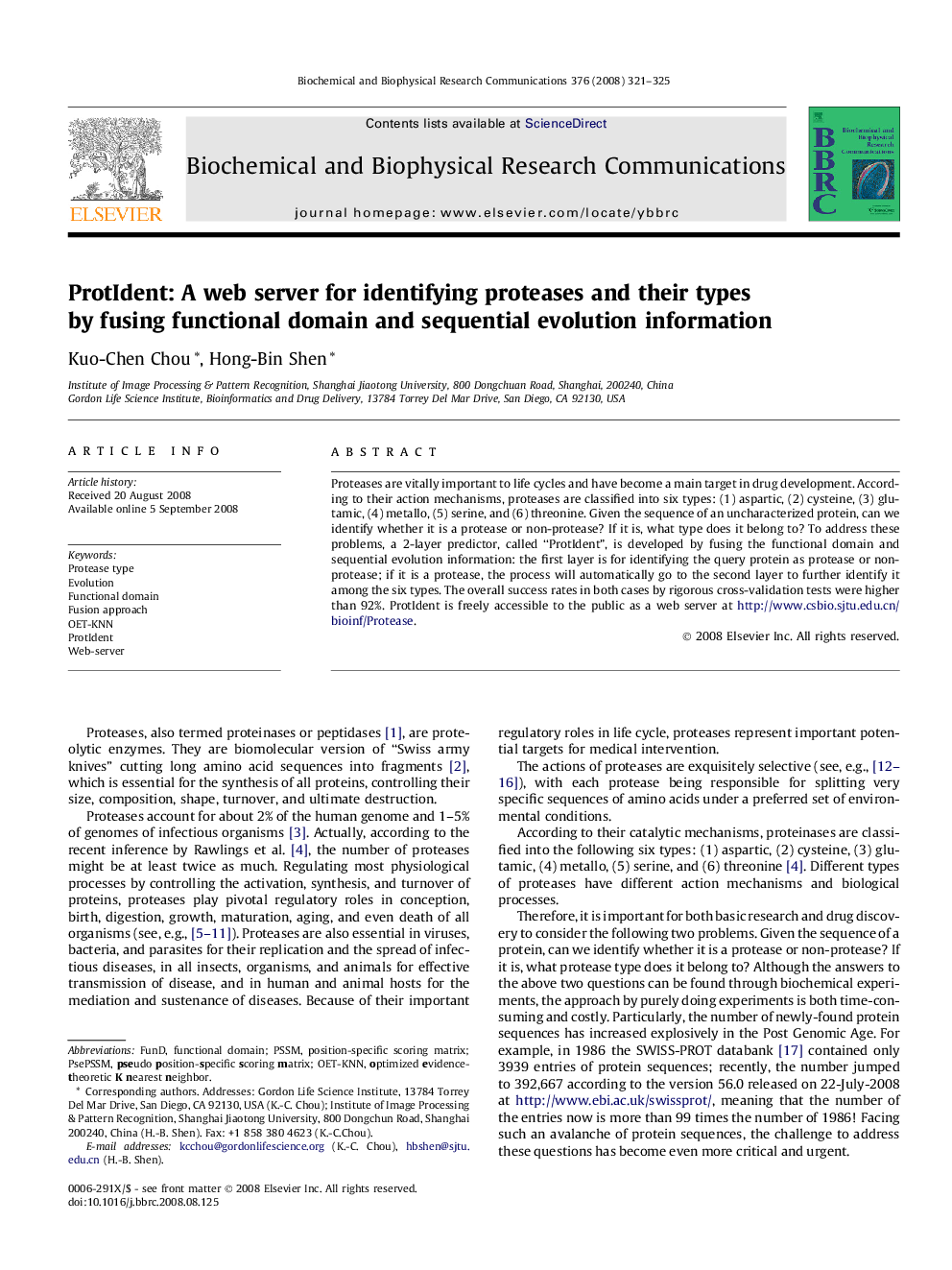| Article ID | Journal | Published Year | Pages | File Type |
|---|---|---|---|---|
| 1934803 | Biochemical and Biophysical Research Communications | 2008 | 5 Pages |
Proteases are vitally important to life cycles and have become a main target in drug development. According to their action mechanisms, proteases are classified into six types: (1) aspartic, (2) cysteine, (3) glutamic, (4) metallo, (5) serine, and (6) threonine. Given the sequence of an uncharacterized protein, can we identify whether it is a protease or non-protease? If it is, what type does it belong to? To address these problems, a 2-layer predictor, called “ProtIdent”, is developed by fusing the functional domain and sequential evolution information: the first layer is for identifying the query protein as protease or non-protease; if it is a protease, the process will automatically go to the second layer to further identify it among the six types. The overall success rates in both cases by rigorous cross-validation tests were higher than 92%. ProtIdent is freely accessible to the public as a web server at http://www.csbio.sjtu.edu.cn/bioinf/Protease.
